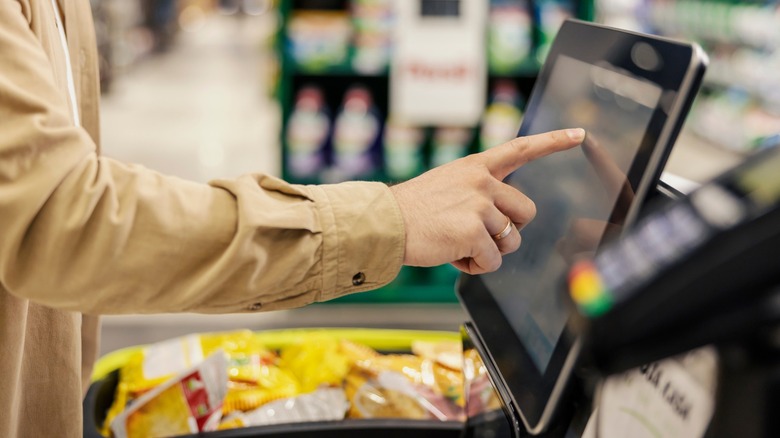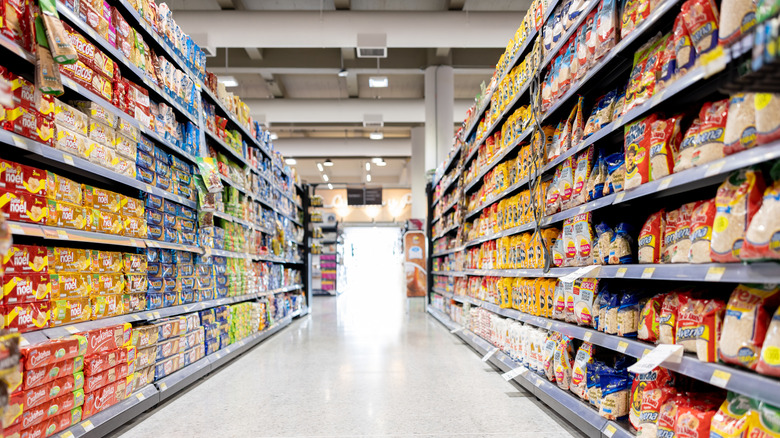The Strategic Reason Candy And Soda Are Placed At Grocery Store Checkouts
We've all been there — waiting in line to check out at the grocery store and a sweet craving strikes. Believe it or not, this is no coincidence. There is a specific strategy and method to how the grocery store stocks its products, including how candy and soda are always positioned right by the register, where you have to look at them while you're waiting to pay for your groceries. Stare at your favorite soda or candy bar long enough, and chances are you'll give into the urge to throw them into your cart at the last minute and start munching. This is know as impulse buying, and it's a major business strategy for grocery stores to make more money.
Soda bottles and candy bars are perfect for this because they're small, individual portions that are also cheap compared to, say, a 12-pack of soda cans. In other words, a customer is much more likely to buy one bottle of soda at the last minute than a full pack. Plus, by this point, customers are tired from grabbing all the items on their planned grocery shopping list, so they're more susceptible to giving in to impulsive purchases.
Other grocery store strategies that get you to spend more
Given the logic that goes into which items are placed at checkout, it shouldn't be surprising that just about every detail of a grocery store's layout is designed to get customers to spend more money — sometimes even getting in the way of your efficient shopping strategies. For example, the most expensive items are placed at eye level, which is sometimes referred to as the "bull's eye zone." This area, which usually refers to the second and third shelves from the top, is actually so coveted that brands have to pay to be placed there. Meanwhile, cheaper items — such as generic store brands — are usually placed near the bottom of shelves.
Product placement even keeps kids in mind. For example, items that a child would want, such as sugary cereals, are placed at a kid's eye level in the hope that they will then pester their parents to buy them. Further, staple items — such as milk, eggs, and meat — are typically located near the back of the store, which forces a customer to walk through the other aisles and take notice of other non-staple items. The goal here is that one or several products will catch the customer's attention while they're on their way to the dairy aisle and they'll end up buying additional items that aren't on their list. Grocery stores also switch up their layouts in the hope that you'll wander around and spend more.

